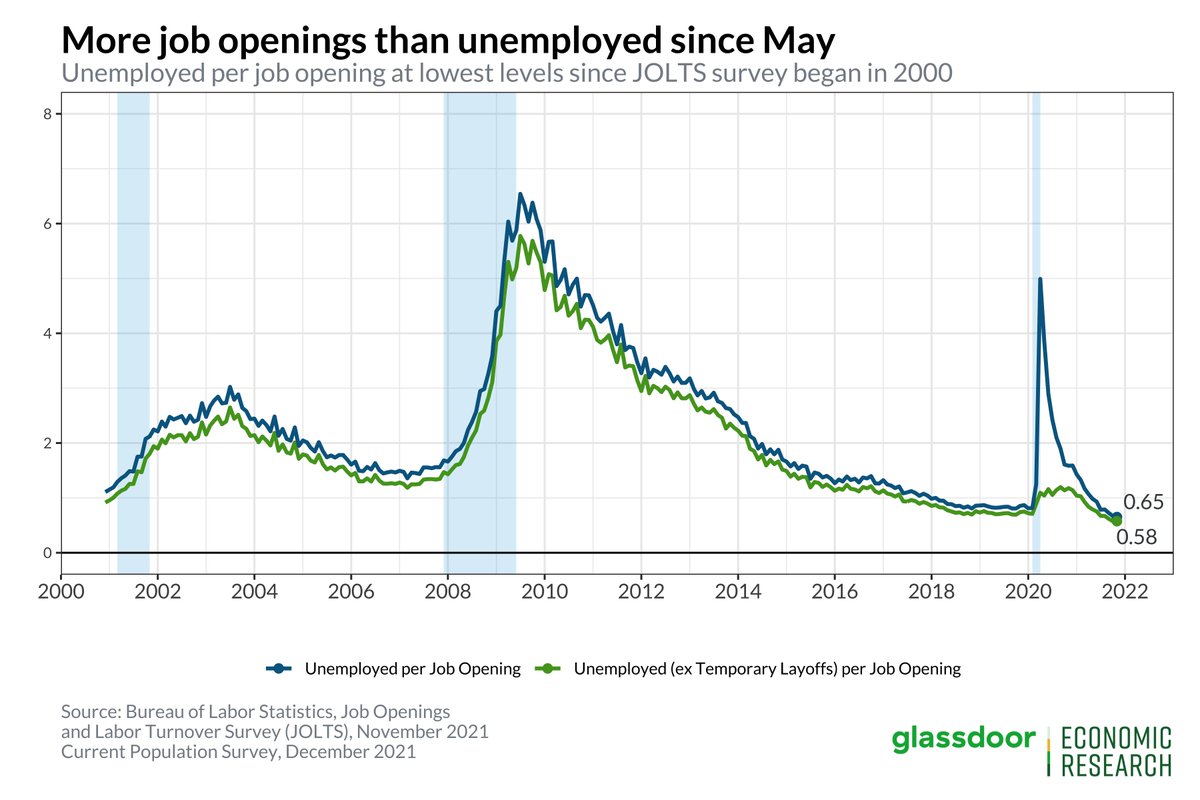
June's #JobsReport shows the job market holding steady despite recession fears. Job gains slowed modestly to 372,000, beating expectations, and unemployment held flat at 3.6% for the 4th month in a row.
This is still a hot labor market even if the broader economy is cooling.
1/
This is still a hot labor market even if the broader economy is cooling.
1/
Job gains cooled only modestly in June, beating expectations. Job gains overall seem to have shifted into a lower gear in the last few months, but recall that in 2019's hot job market, monthly job gains averaged 164k. This is still a healthy clip.
#jobsreport 2/
#jobsreport 2/

Most industries added jobs in June in broad-based gains across the board. A few industry stories:
1. Despite concerns about rotation from goods to services, job gains returned in #retail (+15.4k) and held strong in leisure & hospitality (+67k)
#jobsreport 3/
1. Despite concerns about rotation from goods to services, job gains returned in #retail (+15.4k) and held strong in leisure & hospitality (+67k)
#jobsreport 3/

2. Despite the housing market slowdown, job gains in related industries were maybe muted, but we didn't see large job losses:
Construction: +6k
Real estate: +3.7k
#jobsreport 4/
Construction: +6k
Real estate: +3.7k
#jobsreport 4/
3. Despite reports of prominent layoffs, #tech industries saw job gains in June:
Information: +25k
Computer systems design and related services: +10k
#jobsreport 5/
Information: +25k
Computer systems design and related services: +10k
#jobsreport 5/
With the steady progress in June, payrolls are within striking distance of pre-pandemic levels, just over half a million away. Despite slowdown fears, that milestone is still within reach if we get another 2 months of solid jobs growth.
#jobsreport 6/
#jobsreport 6/

Wage growth is cooling:
Average hourly earnings growth slowed to 5.1 percent year-over-year. Wage growth has slowed even more in recent months, growing at just a 4.2% annualized pace over the last quarter and a 3.8% annualized pace in June.
#jobsreport 7/
Average hourly earnings growth slowed to 5.1 percent year-over-year. Wage growth has slowed even more in recent months, growing at just a 4.2% annualized pace over the last quarter and a 3.8% annualized pace in June.
#jobsreport 7/

The unemployment rate was flat at 3.6 percent in June, for the fourth month in a row. The picture in June, however, is different from recent months bc of the backdrop of falling labor force participation in June...
#jobsreport 8/
#jobsreport 8/

The labor force participation rate ticked down to 62.2 percent from 62.3 percent, and that picture looks even worse for prime-age (25–54) workers where the participation rate dropped 0.3 pp, reversing 3 months of gains.
#jobsreport 9/
#jobsreport 9/

The drop in labor force participation was in large part driven by a decline for Black workers who saw labor force participation fall back after jumping in May. The Black unemployment rate did drop, but you don't want to see that happening w/ falling LFP
#jobsreport 10/

#jobsreport 10/


Workers who are part-time for economic reasons dropped by 707,000, meaning many part-time workers who want full-time work are finding it bc of the strong labor market.
As a share of total employment (right), this is the lowest level on record.
#jobsreport 11/

As a share of total employment (right), this is the lowest level on record.
#jobsreport 11/


Overall, today's #jobsreport reiterates that the labor market is a bright spot in the recovery. The drop in LFP was a blemish, but so far, recession fears have not yet materialized in the labor market.
12/12
12/12
• • •
Missing some Tweet in this thread? You can try to
force a refresh


















